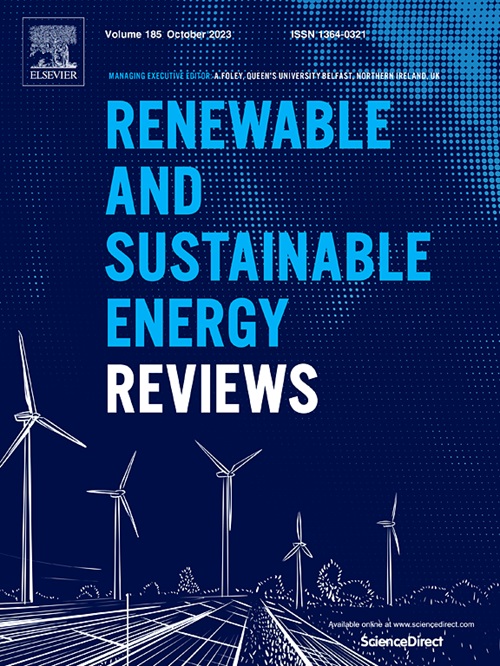碳量子点(CQD)的定义、合成、应用与展望
IF 16.3
1区 工程技术
Q1 ENERGY & FUELS
引用次数: 0
摘要
碳量子点的光电特性和高生物相容性使其成为近年来研究最多的新型纳米材料之一。一些应用领域已经将其作为一种高效、经济和环境可持续的工具。这篇综述文章分为五个部分。第一单元介绍了不同类型量子材料的分类、描述和区别,强调了显著的结构差异。第二部分深入研究了碳量子点,详细介绍了合成路线,并介绍了每种情况下考虑的机制和变量。第三部分详细介绍了其化学结构、稳定性和相关的光学行为。第四部分重点介绍了CQDs最突出的应用,如传感器的发展、污染物的光催化、成像、纳米医学、石油和天然气工业、癌症治疗、植物生长促进剂和抗菌应用。第五部分讨论了挑战和展望。为了对信息进行系统的分析,处理了与每个部分相关的文献中的大量数据,并开发了元分析,以便对信息进行更详尽的处理。本文章由计算机程序翻译,如有差异,请以英文原文为准。
Systematic review of carbon quantum dots (CQD): Definition, synthesis, applications and perspectives
The optoelectronic properties and the high biocompatibility of carbon quantum dots have made them one of the most novel and studied nanomaterials in recent years. Several application areas have used them as an efficient, economical, and environmentally sustainable tool. This review article is divided into five sections. The first unit presents the classification, description, and distinction of different types of quantum materials, emphasizing significant structural differences. The second section delves into carbon quantum dots, detailing the synthesis routes and presenting the mechanisms and variables considered in each case. The third section explains the chemical structure, stability, and related optical behaviors in detail. The fourth section highlights the most prominent applications of CQDs, such as the development of sensors, the photocatalysis of pollutants, imaging, nanomedicine, the oil and gas industry, cancer treatment, plant growth promoter and antibacterial applications. In the Fifth section, challenges and perspectives are discussed. To conduct a systematic analysis of the information, a large volume of data from the literature related to each section is processed, and a meta-analysis is developed for a more exhaustive processing of the information.
求助全文
通过发布文献求助,成功后即可免费获取论文全文。
去求助
来源期刊

Renewable and Sustainable Energy Reviews
工程技术-能源与燃料
CiteScore
31.20
自引率
5.70%
发文量
1055
审稿时长
62 days
期刊介绍:
The mission of Renewable and Sustainable Energy Reviews is to disseminate the most compelling and pertinent critical insights in renewable and sustainable energy, fostering collaboration among the research community, private sector, and policy and decision makers. The journal aims to exchange challenges, solutions, innovative concepts, and technologies, contributing to sustainable development, the transition to a low-carbon future, and the attainment of emissions targets outlined by the United Nations Framework Convention on Climate Change.
Renewable and Sustainable Energy Reviews publishes a diverse range of content, including review papers, original research, case studies, and analyses of new technologies, all featuring a substantial review component such as critique, comparison, or analysis. Introducing a distinctive paper type, Expert Insights, the journal presents commissioned mini-reviews authored by field leaders, addressing topics of significant interest. Case studies undergo consideration only if they showcase the work's applicability to other regions or contribute valuable insights to the broader field of renewable and sustainable energy. Notably, a bibliographic or literature review lacking critical analysis is deemed unsuitable for publication.
 求助内容:
求助内容: 应助结果提醒方式:
应助结果提醒方式:


